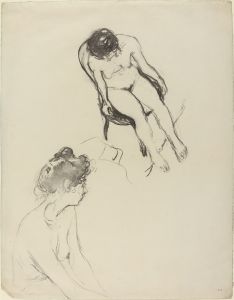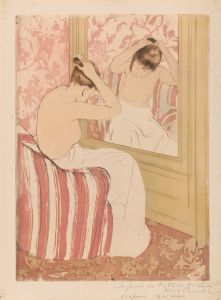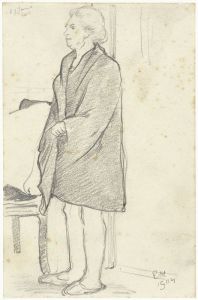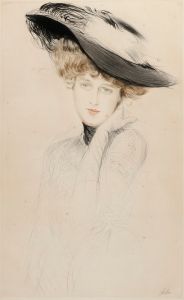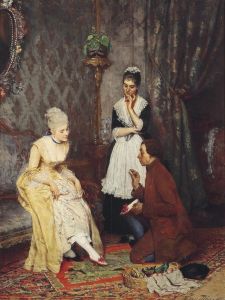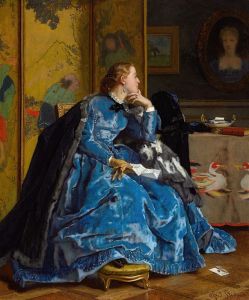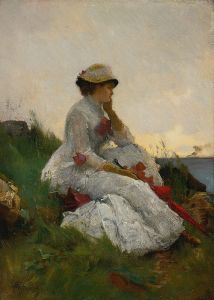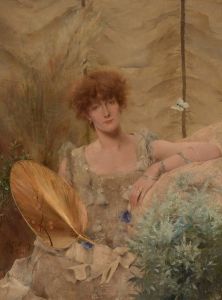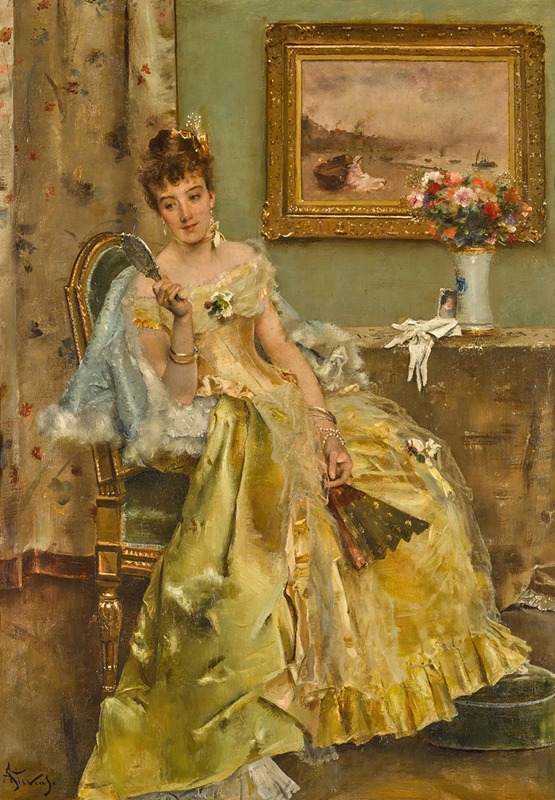
Coquetterie
A hand-painted replica of Alfred Stevens’s masterpiece Coquetterie, meticulously crafted by professional artists to capture the true essence of the original. Each piece is created with museum-quality canvas and rare mineral pigments, carefully painted by experienced artists with delicate brushstrokes and rich, layered colors to perfectly recreate the texture of the original artwork. Unlike machine-printed reproductions, this hand-painted version brings the painting to life, infused with the artist’s emotions and skill in every stroke. Whether for personal collection or home decoration, it instantly elevates the artistic atmosphere of any space.
Alfred Stevens was a Belgian painter known for his exquisite portrayal of women and his ability to capture the nuances of fashion and society in the 19th century. One of his notable works is "Coquetterie," which exemplifies his skill in depicting the elegance and sophistication of his subjects.
"Coquetterie" is a painting that showcases Stevens' mastery in rendering the delicate textures of fabric and the subtle expressions of his subjects. The painting features a woman dressed in the height of contemporary fashion, embodying the concept of coquetry, which refers to flirtatious behavior or a playful display of attraction. Stevens' attention to detail is evident in the intricate design of the woman's attire, highlighting the luxurious materials and the fashionable trends of the time.
Alfred Stevens was born in Brussels in 1823 and became one of the most celebrated painters of his era. He studied at the Académie Royale des Beaux-Arts in Brussels and later moved to Paris, where he became part of the vibrant art scene. Stevens was particularly influenced by the works of the French Realists and the Impressionists, which is reflected in his approach to painting.
The painting "Coquetterie" is a testament to Stevens' ability to blend realism with a sense of intimacy and charm. His works often focused on the lives of women, capturing their roles and experiences in a rapidly changing society. Stevens had a unique talent for portraying the inner world of his subjects, often imbuing his paintings with a narrative quality that invites viewers to ponder the stories behind the scenes.
Stevens' work was well-received during his lifetime, and he exhibited regularly at the Paris Salon. His paintings were admired for their technical precision and their ability to convey the subtleties of human emotion. "Coquetterie" is no exception, as it reflects the artist's keen observation and his dedication to capturing the essence of his subjects.
The painting also serves as a historical document, providing insight into the fashion and social customs of the 19th century. Stevens' attention to the details of dress and demeanor offers a glimpse into the world of the bourgeoisie, highlighting the importance of appearance and social status during this period.
Alfred Stevens' contribution to art extends beyond his paintings. He played a significant role in bridging the artistic communities of Belgium and France, and his work influenced many artists of his time. His legacy is preserved in numerous museums and collections, where his paintings continue to be appreciated for their beauty and historical significance.
In summary, "Coquetterie" by Alfred Stevens is a remarkable example of 19th-century portraiture, capturing the elegance and complexity of its subject with finesse. The painting not only showcases Stevens' technical skill but also offers a window into the cultural and social dynamics of his era.





